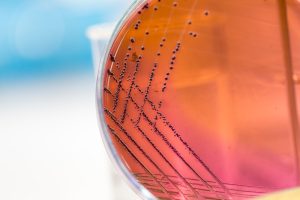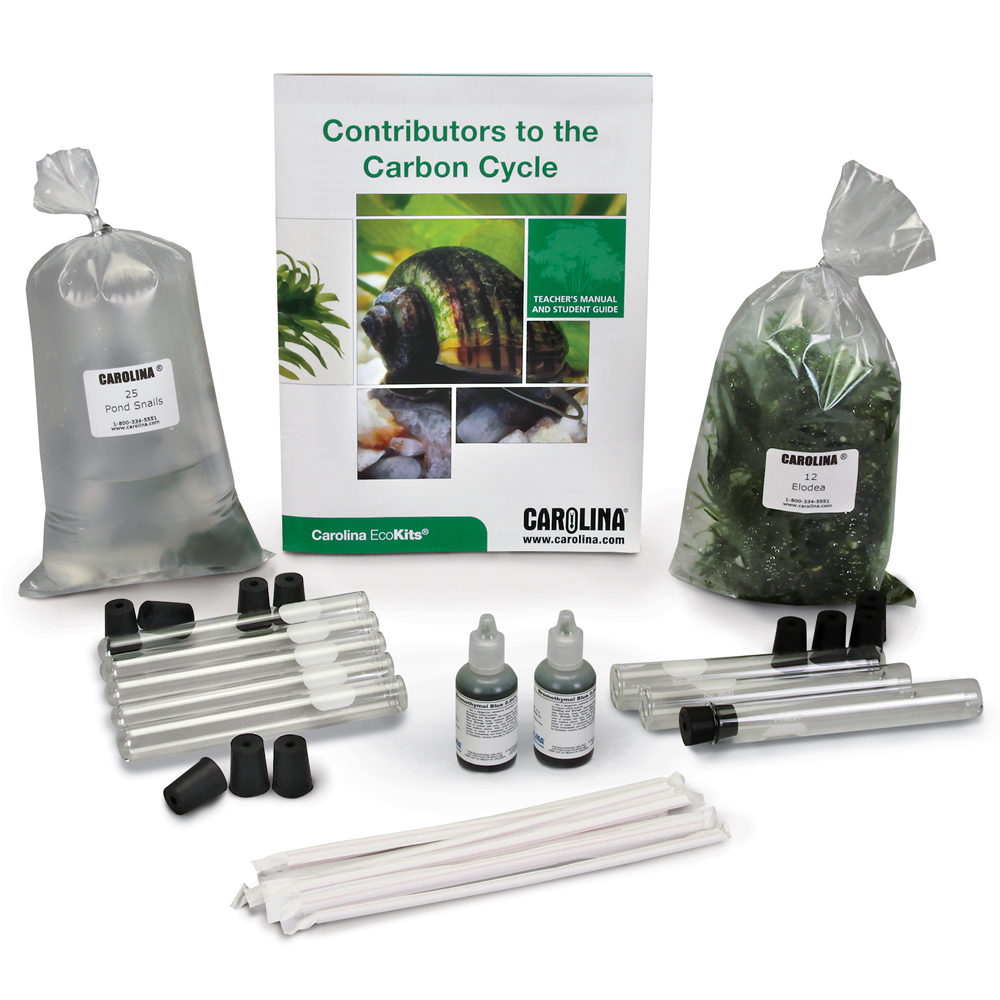Background
You may not even be aware of it, but you contribute to the carbon cycle every day. If you ride in a car, take a train, or fly in an airplane, you contribute to the production of carbon dioxide. The fruits and vegetables you eat were probably shipped in a vehicle that produced carbon dioxide. The meat you eat comes from animals that produced carbon dioxide. The electricity that powers your home and your school quite possibly comes from a coal-burning power plant that produces carbon dioxide. After all that carbon dioxide is produced, where does it go?
Biogeochemical Cycles
Biogeochemical cycles describe how compounds are recycled and reused in an ecosystem. Each step of a biogeochemical cycle involves a chemical reaction or change in state from one form of compound into a new form of compound. The water cycle is an example of a biogeochemical cycle. Water evaporates from the ground or from living organisms, transforming from a liquid into a gas. The water vapor then condenses into tiny liquid droplets, forming clouds. The water falls back to earth as rain, or if the temperature of the atmosphere is below freezing, as hail or snow.
Biogeochemical cycles involve cycling compounds through living, geological, and chemical processes. Therefore, both living and nonliving factors are necessary to reuse matter in the ecosystem. In the water cycle, organisms consume water because their tissues require water to carry out life processes. Animals release water through many processes, and plants transpire water through their leaves, returning this water to the environment to be recycled. Other biogeochemical cycles include the carbon cycle, nitrogen cycle, the oxygen cycle, the phosphorous cycle, and the sulfur cycle.
The Carbon Cycle
Carbon, due in part to its unique ability to form covalent bonds with up to 4 other atoms, is the most abundant element in organic compounds. All organisms are composed, to some extent, of carbon. Lipids, proteins, carbohydrates, and nucleic acids are all carbon compounds. Even coal and petroleum, the ancient remains of plants and sea life, are composed primarily of carbon. Diamonds are carbon compounds formed under extremely high heat and pressure. So, how is carbon recycled from one form into another in the ecosystem?
Photosynthesis and respiration are interdependent processes in the carbon cycle. Through the process of photosynthesis, plants and other autotrophs take up carbon dioxide from the atmosphere and trap energy from the sun to produce organic compounds that help them grow and maintain life. While through the process of cellular respiration, organisms utilize organic compounds from food for energy, and they release carbon dioxide back into the atmosphere as a byproduct of respiration.
Humans influence the amount of carbon dioxide that is released into the atmosphere. Many human activities contribute to increased carbon dioxide emissions, including the burning of petroleum and fossil fuels and the clearing of forests and vegetation. Many scientists theorize that carbon dioxide emissions are leading to higher concentrations of atmospheric carbon dioxide, which has many consequences for ecosystems.
Carbon compounds are stored in several different places on Earth called carbon sinks. Forests, coal, and oil are all important carbon sinks, but the ocean is the world’s largest carbon sink. The ocean can and does absorb large quantities of carbon dioxide from the atmosphere. However, as the amount of carbon dioxide in ocean water increases, the acidity of the ocean water increases. This is because when carbon dioxide is dissolved in water, it forms carbonic acid. Marine organisms with shells, such as mollusks and corals, are very sensitive to increased acidity. Their shells are composed of a carbon compound called calcium carbonate which can dissolve in acidic environments.
Bromothymol Blue and Carbon Dioxide
Bromothymol blue is a pH indicator. In conditions that are acidic, bromothymol blue appears yellow; however, in basic conditions it is blue. In this set of activities, bromothymol blue is used to determine the presence of added carbon dioxide. When carbon dioxide is dissolved in water, carbonic acid forms, forming an acidic compound. The added carbon dioxide causes a solution containing bromothymol blue to turn yellow. When the dissolved carbon dioxide is removed, the solution will turn blue.
In this set of activities, students can investigate the different organismal contributions to the carbon cycle.
Standards
This activity addresses the following AP® Environmental Science concepts:
- ERT-1 Ecosystems are the result of biotic and abiotic interactions.
- ERT-1.D Explain the steps and reservoir interactions in the carbon cycle.
- ERT-1.D.3 Carbon cycles between photosynthesis and cellular respiration in living things.
AP® is a trademark registered by the College Board, which is not affiliated with, and does not endorse, this product.
Shop the Kit
Additional Reference Kits
Explore More Activities
Get Free Activities to Your Inbox
Related resources

Using Algae Beads as a Model for Photosynthesis

Hands-On with Photosynthesis and Cellular Respiration

Photosynthesis

Atmospheric Carbon Dioxide and the Greening of the Planet

Cellular Respiration






